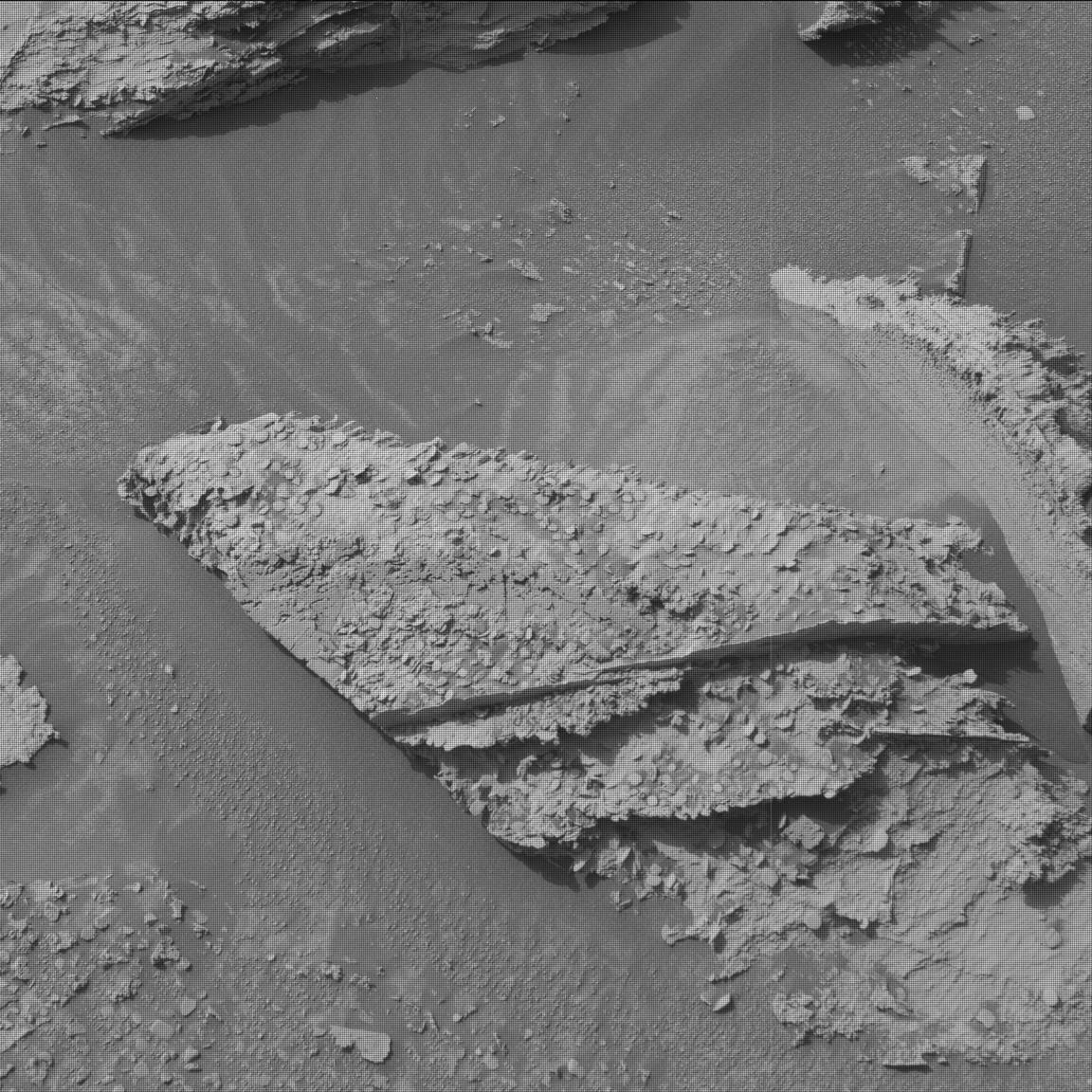3 min read

The Sol 3496 (last Monday) plan did not execute due to an issue onboard the rover that took a few days to investigate. Today, we were back to normal operations, and we were able to accomplish everything that was in the Sol 3496 plan as reported by my fellow blogger Cat O’Connell-Cooper, and more! More was possible because we had slightly different communication windows between Curiosity and Earth in this plan than in the Sol 3496 plan. This meant we could wait to drive to our next location on the second sol of this two sol plan giving us more time in this workspace.
First and foremost, we added APXS to the plan because it could run in the cool evening temperatures of Sol 3503. We selected a nice smooth patch of bedrock, the target “Omai,” so that we could brush it with the DRT before imaging it with MAHLI and analyzing it with APXS. MAHLI will reattempt a small mosaic across the prominent resistant veins in this area at the target “Wandapa,” and will image ChemCam’s “eye” to monitor the state of that part of the instrument.
Another sol to plan meant we could add another ChemCam raster, as well. In addition to “Mahdia,” the previously-selected bedrock target, we added “Murupu,” the smoother material visible on the upper surface of the rock pictured above. This smoother material might be one of the veins that cut through the rocks here, so getting chemistry on it would be helpful to understand its relationship to the bedrock. ChemCam replanned their long distance RMI mosaic of one of the features along the upper portion of “Gediz Vallis Ridge."
Mastcam had a mix of previously-planned and new observations. The former included three stereo mosaics, two of which covered the dramatic stratigraphy and layering in this area at targets “Serra Mara” and “Eboropu.” The third covered a smaller, but still interesting, area of sand motion near the rover at target “Karto.” New observations included two stereo mosaics that stretched from our workspace to our drive target to help scout the path ahead and provide context for where we are headed. Mastcam will also observe the brushed surface at Omai with its multispectral capabilities.
REMS, RAD, and DAN will be back at it at their usual cadence, and Navcam will acquire a dust devil movie, cloud movie, and an image to monitor the amount of dust in the atmosphere. Hopefully Navcam sees clear sailing up ahead for Curiosity after our break in the action!
Written by Michelle Minitti, Planetary Geologist at Framework







